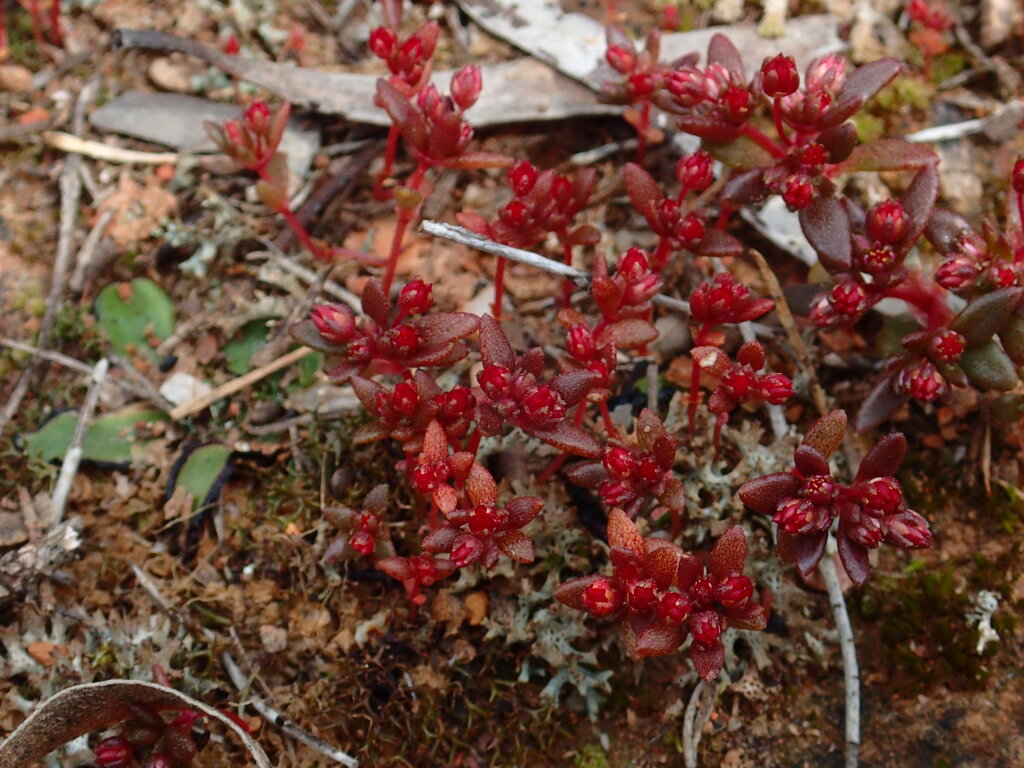Crassula
Annual or perennial herbs, decumbent to erect, usually succulent, sometimes aquatic, rarely subshrubby, slightly woody perennials. Leaves opposite, connate at least in a basal ridge, usually entire, glabrous or with marginal hairs. Inflorescence a spike-like to umbel-like thyrse with 1–many dichasia, rarely reduced to monochasia or a single axillary flower, either foliose with cymules borne in axils of leaf-like bracts or bracteose and distinct from the vegetative parts; flowers 3–5-merous. Calyx basally connate; corolla scarcely connate, with lobes spreading or rarely tubular and sometimes with terminal appendage (not in Australia); stamens as many as petals, basally fused to corolla tube; nectary scales free; ovary superior, carpels as many as petals, free, with 1–many ovules. Seeds smooth, rugulose, tuberculate and/or with longitudinal ridges.
Ca. 200 species, world-wide but mainly in temperate areas and with more than 80% of the species occurring in southern Africa; c. 25 species recorded from Australia (14 naturalised).
Toelken, H.R.; Jeanes, J.A.; Stajsic, V. (1996). Crassulaceae. In: Walsh, N.G.; Entwisle, T.J., Flora of Victoria Vol. 3, Dicotyledons Winteraceae to Myrtaceae, pp. 542–555. Inkata Press, Melbourne.
 Spinning
Spinning


